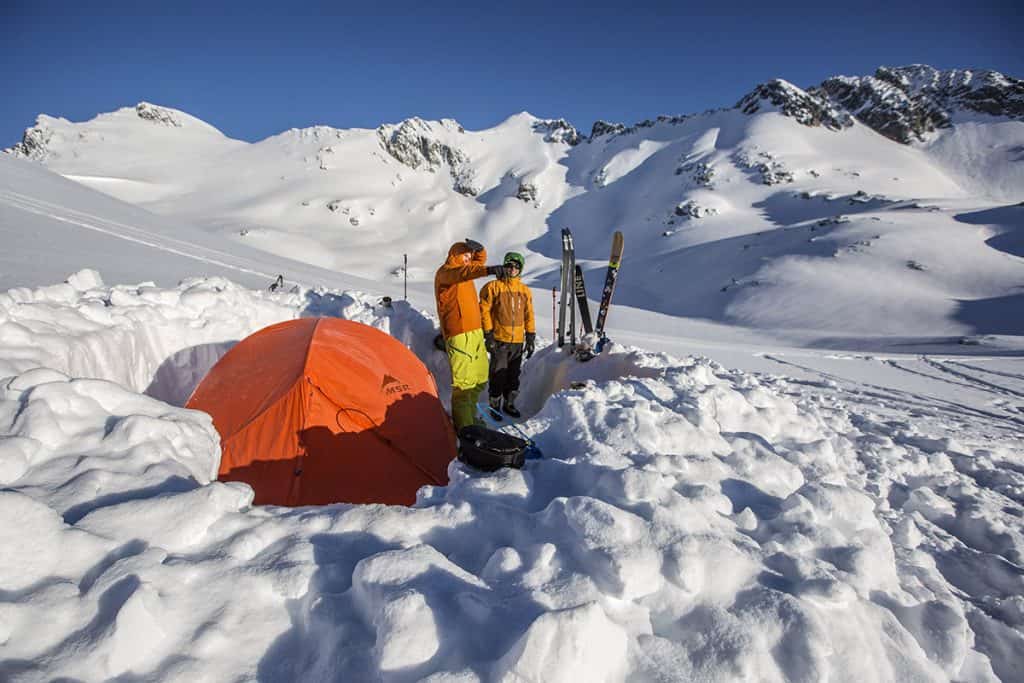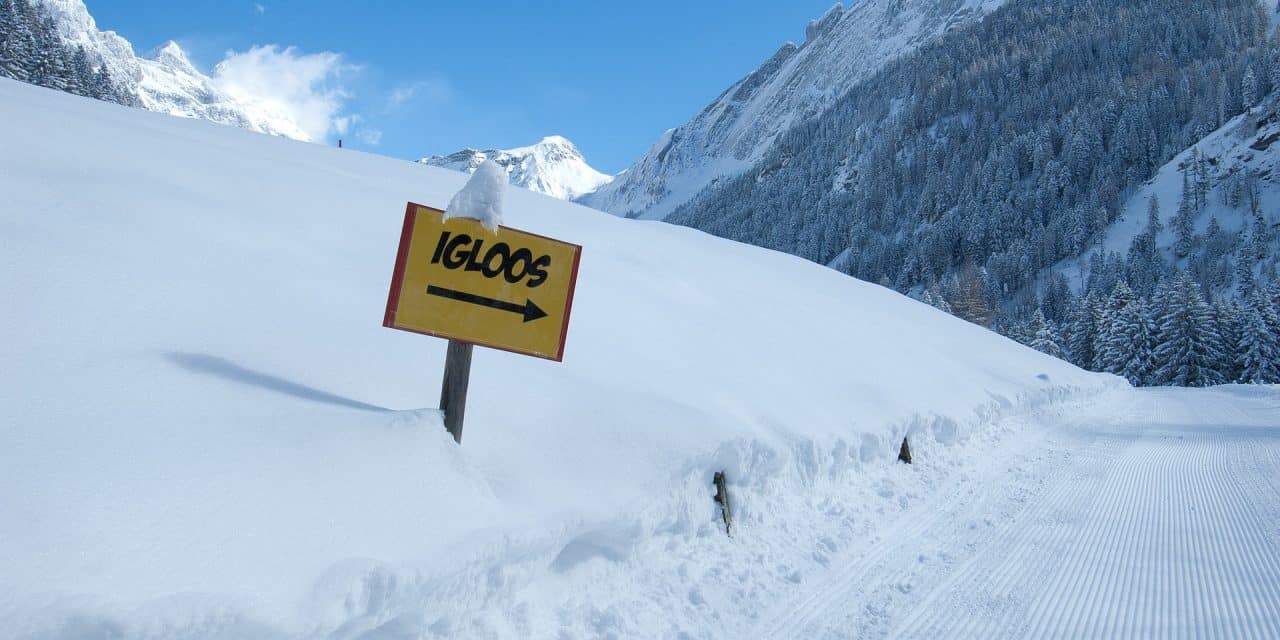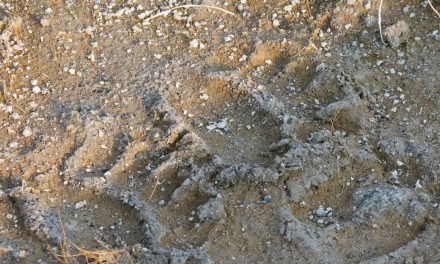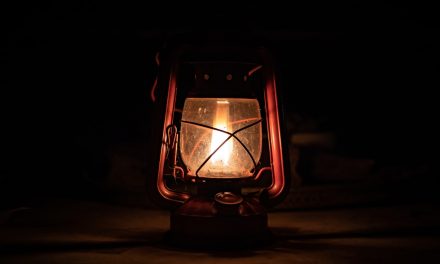Sub-zero winter camping is characteristic of clean and fresh snow. It is also synonymous with a backcountry that is devoid of the dense summer crowds. The environment is rewarding and challenging in equal measure. So, we can’t limit camping to a three-season experience. Winter outdoors is bearable with the right gear such as heated jackets, but you also need a reliable shelter to shield you from the freezing cold during the night – It can be unbearable.
The best snow shelters include the obvious igloo, a snow trench, a quinzee, a snow cave or building structures around a tent to break the wind. All these options provide protection and warmth against the harsh cold conditions, but which one is right for you and your occasion?
#1 – Snow Igloo
A block of ice is a perfect insulator. So, building an igloo from blocks of ice is an incredible way of battling the cold while you are out camping.
A candle and the radiation from your body can get temperatures in the shelter to as high as 60 degrees. Yes, really! This is not optimal though as the snow will melt. Temperatures inside of 20 to 30 degrees can be held for longer periods. Therefore, you and your gear will remain perfectly dry!
Water droplets will occur from melting ice when the temperatures get warm inside the igloo. To combat this, simply dig a trench around the inner perimeter wall to catch and collect the water.
Igloos are dome-shaped, which makes them spacious enough for you and your gear. Moreover, you will appreciate the fact that igloos are strong and will perfectly withstand winter winds and snowfalls.
Not a piece of cake
While igloos do sound amazing, it is not an all-rosy affair.
Snow igloos are pretty challenging to make and you will need the right skills, which even then takes hours to complete. If you’ve never made one before and if you don’t have an experienced hand to guide you along, it would be best to create an alternative easier shelter.
Weather and location dictate whether you’ll have a snow igloo or not. If the temperatures get warmer and the ice blocks can’t hold up, then an igloo is not an option.
Moreover, igloos are not forest shelters due to the fact that forest snow stays light, fluffy, and uncompacted. You need to be able to cut solid blocks, and the optimal snow for this is situated in barren areas where the snow is tumbled by wind and compacted.
Another consideration when building an igloo is air circulation. If the snow starts melting it can freeze into an airtight layer on the inside and suffocate you, therefore you do not want the walls icing up.
A properly constructed igloo should have an air inlet and outlet. Simply punch some vent holes for the fresh air to circulate. In sub-zero camping conditions, this method will be much warmer compared to a tent, where cold air will rush in from many different directions.
#2 – Snow Trench
Generally, shelters that are made from snow are warmer. Every winter camper understands this basic winter camping principle. And since sub-zero winter camping is exceptionally hazardous, it is essential to look at the best way to seek safe and warm shelter in the winter and still enjoy your camping expedition.
A snow trench (or a snow pit) is no doubt an exciting winter shelter. This type of housing is ideal for both shallow and deep snow types, which explains its popularity among winter campers.
Stitching it up
The trick for shallow snow is to heap the snow in a large mound and let it stay that way for two or so hours. You can then shovel it across the middle to form a trench that is about 3 to 4 feet wide, and the depth can go to the ground level.
In case you have to deal with deep snow, then the width should be the same, and dig it up as deep as possible or to the ground level. Either way, line the bottom of the trench with materials that can insulate you from the underground cold. Then, you can lay down your sleeping bag. However, the type of sleeping bag should have a rating of minus 40.
What about the roof? Pretty simple – you can use a poncho to cover the roof. Additionally, you can use overlapping boughs, sticks, skis or poles and cover with a tarp. You can then throw loose snow over the tarp.
Constructing a snow trench is considerably faster and easier than building igloos. You won’t get full of snow like you would with other shelters. Finally, it doesn’t take a lot of snow, and they are perfectly ideal for emergencies.
#3 – Tent Wind Breakers/Snow Wind Breakers

Every avid camper understands the need for proper preparation. Among the essential pieces of equipment is a functional shelter.
For winter camping, a four-season tent will work quite fine. They are warmer than their 3-season counterparts, and you can set them anywhere. They are also perfectly dry if the awnings work right.
Besides, they provide sufficient ventilation in comparison to snow shelters that can become airtight if you don’t monitor your ventilation. So winter tents come with a great range of advantages apart from the fact that you’ll need better ways to keep yourself warm in the tent.
Cheating the winter wind
Tents may not reliably withstand winter winds that are often synonymous with heavy snowfalls. And that brings us to the need for tent windbreakers.
Additionally, you can’t go out for a winter camping expedition without sufficient preparation on how to minimize the impact of wind. Doing so is a recipe for chaos. So, consider purchasing a wind optimized tent with function windbreakers. They always have three sides on average. More advanced options also include roofing.
But what if you didn’t carry along a tent windbreaker or if the wind is too strong? Your windbreakers may even fly away! Here, you can consider the possibility of constructing a windbreaker out of snow. It’s pretty convenient and straightforward. All you need to do is to arrange snow blocks vertically around three sides of your tent. Just ensure that the height of the walls is 6 feet tall.
#4 – Quinzee/ Snow Mound Shelter
Quinzee is a Dene word that loosely translates into a makeshift shelter that is made from mound snow. It is a temporary type of camping accommodation that is easier and faster to make than standard igloos.
Building a Quinzee
Simply select a perfect spot, and in the chosen area, place a vertical marker to determine the center of the shelter. You can also tie a flexible cord on the upright tag and scribe a near-perfect circle on the snow. You don’t need to go through this step if you’ve been through the process before.
Pile snow on the circle. You can also use tarps or shovels to do the job faster. It should be tall enough to allow 2 or 3 people to sit or stand. The size will depend on your crew number and the amount of gear you expect to store in it. Mix various layers to give your mound more strength.
Now, let the pile settle for about 2 hours once you achieve the right size. For your information, loose snow rests at about 35 degrees. So, ensure you let it rest at that angle lest you be faced with a buckling roof or fragile walls. Compact the mound a bit and dig an entrance. The entrance should face away from the direction of the wind. It should also go deeper down then up. This way, cold air sinks in the deep section and pushes warm air up to the floor level.
Excavate the interior and clear out the inside to the extended radius. You can also clean it and put a vent. Snow shelters can often get airtight and disastrous if not adequately ventilated.
Quinzees are famous because you can easily make one without prior experience. You also don’t need special tools. Finally, snow mound shelters are perfect for a versatile range of snow conditions.
#5 – Snow Cave
Winter camping in the hillside is a perfect idea. However, two challenges come with it.
Firstly, hiking on a wet and snowy slope is difficult and risky. A little slip may end up with a bloody nose or loose teeth. You certainly don’t want to risk that. Get yourself the right gear and be careful while on the trails.
Secondly, it’s challenging to set up a tent on the hillside. It is even more complicated when the terrain is very steep. But that doesn’t mean backing out from your winter camping – ladies and gentlemen, introducing, snow caves.
A snow cave will perfectly take care of your shelter needs when the terrain is too hilly. You’ll need to dig the outside so that the entrance is lower than the sitting level or floor.
Ensure that you poke up a ventilation point and stick a small pole in it. Additionally, you can use ice blocks in place of a door. Keep turning the pole frequently to ensure that it provides ventilation.
If you are camping in an area with thick snow, then you can also make use of natural snow caves that form from overhanging tree branches. You won’t need to do any digging.
The Wrap Up
We all desire to keep warm in freezing sub-zero winter temperatures. However, an expedition that should be exciting may turn out to be a health risk if you don’t keep warm.
Camping during winter is one mammoth of an adventure. There are many options to choose from when considering the type of shelter to put up in such a season. Winter tents with the right tent windbreakers are a perfect choice. A snow trench is a useful option too, and less demanding to construct. Besides, you can also consider quinzees or snow caves if you’re camping on a steep slope.
- Hammock Benefits: What The Tent Industry Doesn’t Want You Knowing - November 19, 2022
- How I Maintain My Hygiene When Camping - November 19, 2022
- How to Survive a Meet & Greet with a Bear - November 18, 2022






